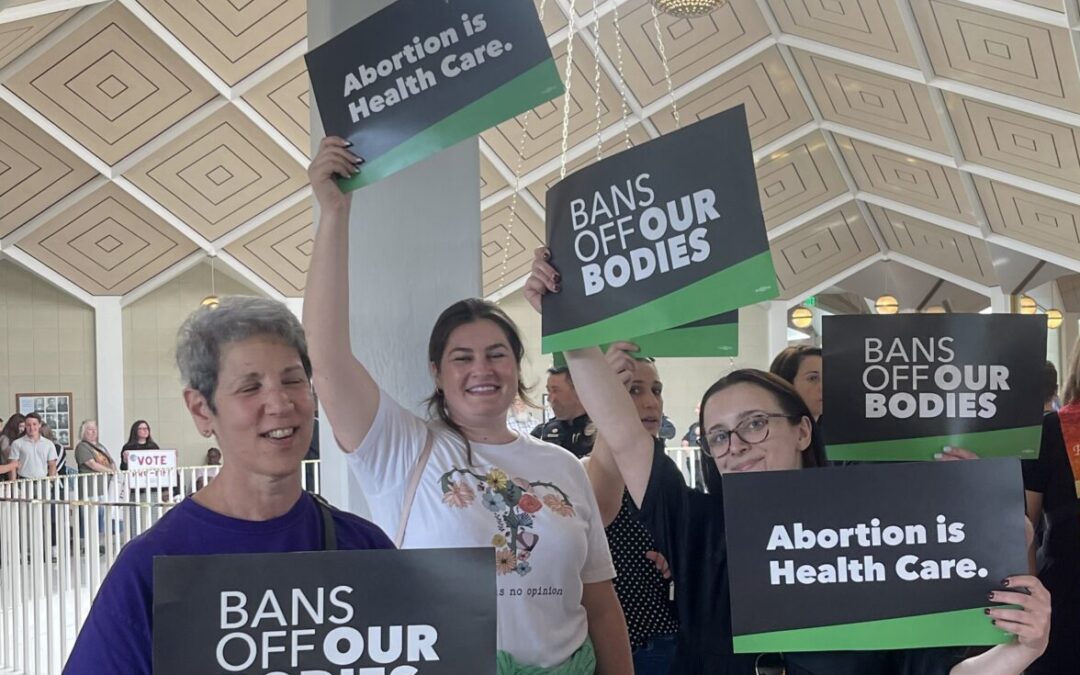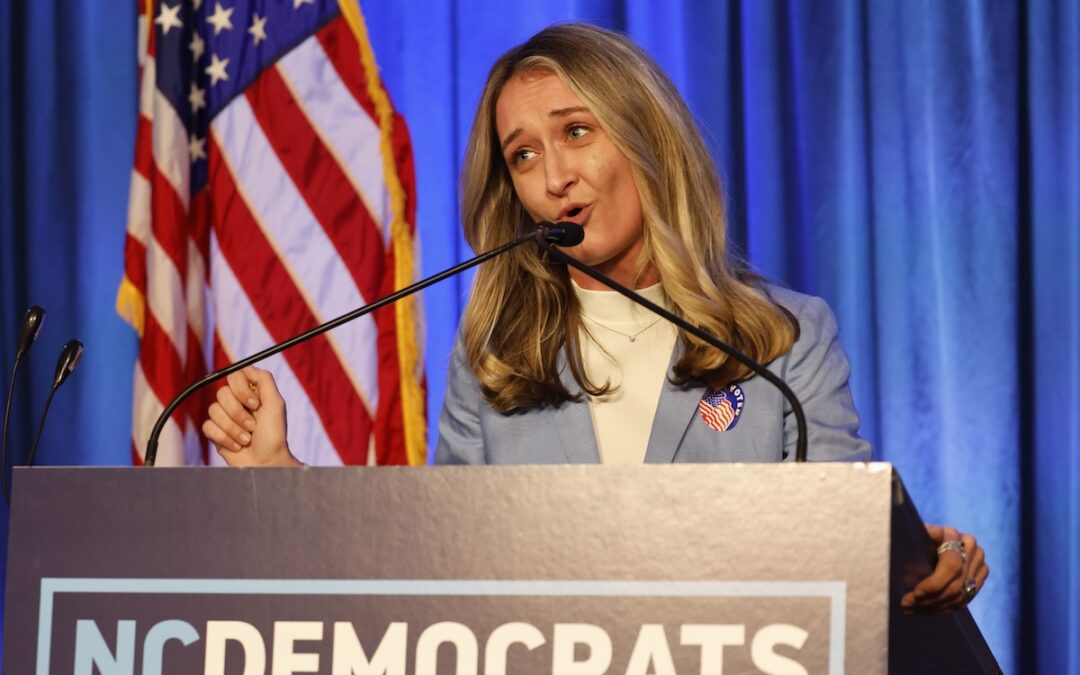
A NC teacher says that, with almost 30% of school districts reopening for in-person learning, district leaders are making a mistake. (Image via Shutterstock)
Pediatricians expect to see a spike in childhood COVID cases nationwide as school districts across the US reopen, some with in-person learning.
(Editor’s Note: A version of this story was originally published at Courier Newsroom.)
With North Carolina schools expected to resume learning next week, a new report says that more than 13,000 children from 0 to 17 years of age have been infected with the novel coronavirus.
The report from the American Academy of Pediatrics explores the high stakes for states as they consider how and when to resume K-12 education this month. Dozens of NC districts, educating more than half of the state’s 1.5 million schoolchildren, are returning with remote instruction as the pandemic lingers.
Since March, the national report counted 13,346 cumulative cases in North Carolina children. One child, Aurea Yolotzin Soto Morales of Durham, died. She was 8.
The state also recorded its first death this week from a cluster tied to a child care facility, a staffer at a facility in Washington County. The News and Observer reported that a Raleigh psychiatric hospital confirmed four children under its care had tested positive. The children were asymptomatic and the hospital had to stop admitting new patients.
Several studies suggest that children transmit the virus at far lower rates than adults, but those numbers are based on relatively limited data sets, and a recent extensive study from South Korea suggests that the seeming protections are limited to younger children. Children 10 and over transmit at about the same rate as adults, the study said.
Gov. Roy Cooper has insisted the state will lean on data in its reopening plans, with NC schools expected to resume some form of instruction this month.
The hard truth is, we simply won’t know how schools will affect transmission rates until we see what happens. No country in the world has attempted a widespread reopening of schools while in the midst of the kind of surging caseloads the United States finds itself in. The focus on hospitalizations and fatalities is a natural extension of the fear of the unknown, and many parents take little comfort in limited studies, leading to an uncertainty of how to proceed with few easy answers.
COVID cases on the rise among children
Meanwhile, as the national report shows, the number of children in America with coronavirus is growing rapidly, with more than 338,000 kids contracting COVID since March.
And the number of children infected has increased 40% in just the last two weeks of July, according to the American Academy of Pediatrics, when states identified over 97,000 new cases in children. The number is expected to rise as schools reopen throughout the country.
The report from the pediatricians group also sheds light on how many children might die from COVID.
About 0.03% to 0.04% of cases in children were fatal based on June and July statistics, with 86 children in total dying from the disease. If the number infected jumps another 40% in the first two weeks of August, that could add another 40 to 50 deaths to ongoing totals, increasing the total child fatalities by nearly 50% or more. If measures do not effectively stop the spread of COVID-19 among school-aged children, these numbers could continue to grow every two weeks if plans to reopen remain unchanged, potentially leading to hundreds or thousands of deaths.
Hospitalizations would also increase. So far, more than 2,600 children have been hospitalized for COVID, about 2% of total cases in kids from the 20 states that provided that data.
Assuming another 40% increase in cases, that would put another 2,711 children in the hospital over the next two weeks. But the hospitalization rate for children in New York City, the former epicenter of COVID cases in the United States, was far greater, at nearly 9%. If other hotspots mirror that number, you could see more than 12,000 additional kids in hospitals if cases again increase by 40% in the next two weeks.
In Florida, nine children under the age of 18 have died from complications related to the virus, according to CNN. The youngest fatality was a 9-year-old girl. Florida has also emerged as a major hotspot for the virus, with 492,000 cases, it also broke the record for number of positive cases in a day; more than 15,000 newly confirmed cases in late July.
In Georgia, the state’s largest school district said 260 employees had tested positive for COVID or have been exposed even before the school year starts. And this month, the Centers for Disease Control and Prevention released a report finding that at least 260 campers and staff—including 231 minors—at an overnight camp in Georgia tested positive with COVID-19, representing a 76% positivity rate of the 344 attendees for whom test results were available.
A photo from the first day at a Georgia high school showed children crowding a hallway, with very few masks in sight.
Meanwhile, President Trump has been pushing hard for schools to reopen.
So far, a majority of states have asked individual school districts to decide how they will reopen schools. Many are considering a hybrid option, which would allow students to come to school less than five days a week for in-person instruction and then have remote learning online for the remaining days of the week.
But five states, Florida, Iowa, Missouri, South Carolina and Texas, have all mandated in-person instruction either full or part-time for students, according to EdWeek.
These estimates on hospitalizations and fatalities are alarming because they reflect the behavior of individuals when states were still adhering to lockdown measures and children were out of school. As people return to work and there is further mixing of households, the United States could see a jump in its already sky-high caseload.
What have other countries seen?
While it’s still unclear how well children transmit the virus to others, the United States can learn from the experience of other nations that reopened schools, like Israel. Two months after reopening their schools with virus mitigation practices the country saw an explosion of cases, far greater than its initial peak of cases in the spring.
Schools in the United States also have to consider the safety of their teachers and other school staff.
Teachers unions across the country have protested school district reopening plans, calling for remote learning and better preparedness. There have also been many reports of individual teachers taking early retirement, utilizing a leave of absence or leaving teaching altogether to avoid instructing students in unsafe conditions.
Politics

Op-Ed: North Carolina Republicans are working overtime to restrict abortion even more. But we can stop them at the ballot box.
When I think about abortion access in North Carolina, I think about lying there on a hospital bed after I was sexually assaulted, with sympathetic...

Mark Robinson and Michele Morrow pose a threat to women and kids, warns Anderson Clayton
The state’s Democratic Party chair believes North Carolinians deserve better than a six-week abortion ban and the defunding of public schools that...
Local News

The 5 most believable UFO sightings ever reported in North Carolina
Read about five alien encounters that may forever remain unexplained. When you think of the most common places where you might hear a UFO sighting...

Good News Friday: It’s a good day to be a fan of the NC State Wolfpack
The men's and women's teams will compete for a national championship in college basketball this weekend. Plus: How to watch the solar eclipse, and...





